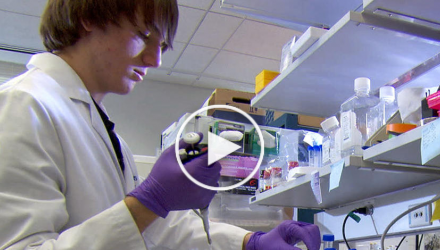Once a young lady has her first menstrual cycle, the ObGyn expects to see her and if not then, certainly by the time she is 18 years old. And thus begins the annual “lady days ritual,” as I call it.
RELATED ARTICLES:
- Women flocking to wellness because modern medicine still doesn’t take them seriously
- Stanford medical researchers: Women Being CONNED into Mastectomy by Doctors who SCARE them with False Genetic Testing Results
For those of you who don’t know what happens, we take off our clothes, put on a backless medical gown, hop up on the examination table and put our feet into a pair of stirrups- but only after we’ve slid down almost to the point of falling off the table.
At that point, the doctor looks at our genitals and inserts a plastic disposable or cold metal speculum into the vagina. It’s cranked open and a swab is taken. Then, the doctor inserts a finger or two and pokes around to feel our internal organs.
Super.
“In 2010, doctors performed 62.8 million of these routine pelvic examinations on women across America. In total, gynecological screenings cost the U.S. $2.6 billion every year. And yet, a new study published in the Annals of Internal Medicine reports that there is no established medical justification for the annual procedure. After scouring nearly 70 years of pelvic exam studies, conducted from 1946 to 2014, the researchers found no evidence that they lead to any reduction in “morbidity or mortality of any condition” among women. In light of the study, the American College of Physicians, a national organization of internists, has crafted a new set of guidelines warning doctors that exams conducted on otherwise symptomless women can ‘subject patients to unnecessary worry and follow-up’ and can ’cause anxiety, discomfort, pain, and embarrassment, especially in women who have a history of sexual abuse.'” 1
So, where did the annual exam come from? Apparently, that’s rather difficult to trace. In their editorial, also published in Annals, George Sawaya and Vanessa Jacoby from the University of California–San Francisco, concluded that the pelvic examination has ‘become more of a ritual than an evidence-based practice.'” 2
RELATED ARTICLE:
But it’s not just the annual exam that internists and gynecologists disagree on:3
- Two years ago, the American College of Obstetricians and Gynecologists admitted that “no evidence supports or refutes the annual pelvic examination … for the asymptomatic, low-risk patient.” And yet ACOG continued their endorsement of the exam because it seems “logical.”
- In 2012, the United States Preventive Services Task Force and the American Cancer Society released new recommendations suggesting that women should undergo routine pap smear tests every three years, not once a year. Then in March, a Food and Drug Administration panel voted to replace the pap smear with an HPV test targeted at identifying the strains of the virus most likely to lead to cervical cancer.
- In 2009, the USPSTF changed its stance on routine mammograms, recommending that women begin undergoing mammograms at age 50, not 40 and that they do them every two years, not every year.
So, here’s a bold question, if the annual pelvic exam isn’t necessary and you don’t need a pap smear every year and you don’t need a routine mammogram (yes, run from those!) then, can we trust anything they are telling us? If the sole purpose of getting us in there is simply to make money…(you finish that sentence).












